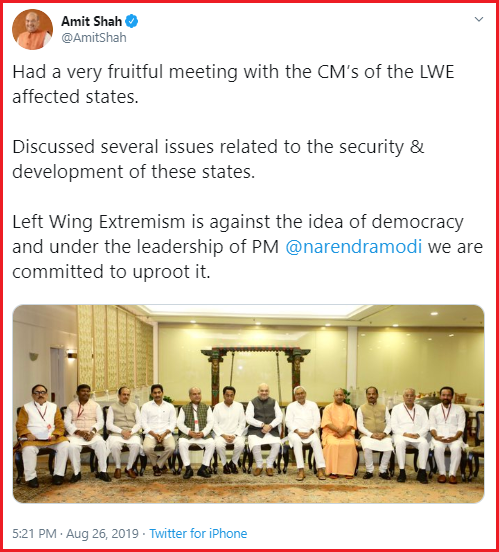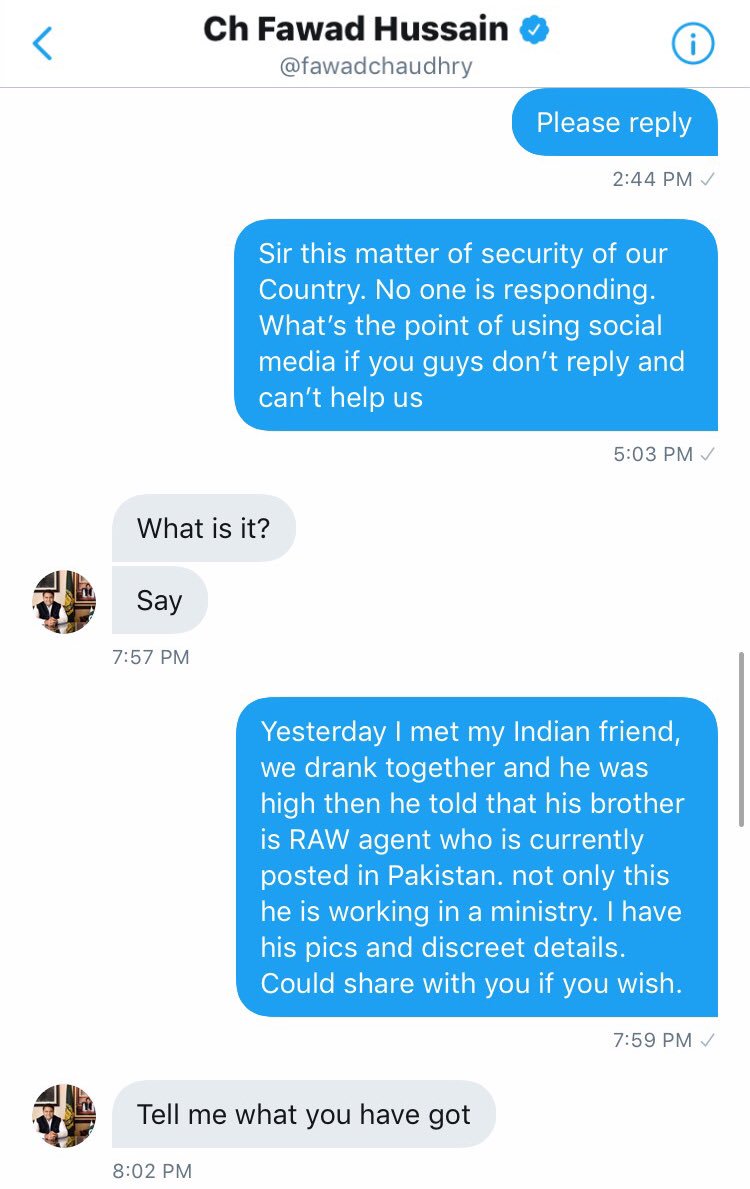Which is the most popular ministry in Modi sarkar right now? Without any doubt, it is the Home Ministry. The Hindu right expects a lot from Amit Shah. After all, we have been waiting quite literally for decades. This from yesterday.

I have been saying for the longest time that the leftist terror threat all across India is much bigger than any kind of external threat. Our security forces have suffered multiple attacks on the scale of Pulwama or Uri. And yet, for some inexplicable reason, these attacks over decades have failed to create a sense of urgency among the general population.
Does anyone remember Dantewada in 2010? That’s where 76 CRPF men lost their lives.
At that very moment, India should have gone for an all-out war against left-wing terror. But now is as good a time as any other.
Let me put it to you like this. If you heard tomorrow that Pakistan had crossed the international border and occupied say the city of Jaisalmer in Rajasthan, what would you do? Would you not call for immediate war to liberate the people of Jaisalmer? In 1999, when it was found that Pakistani infiltrators had entered Kargil, we did not wait. We went to war immediately.
Well, much of Indian territory has been facing exactly that for several decades now. Parts of Jharkhand, Chhattisgarh, Odisha and bits of other states including Bihar, Bengal, Maharashtra and Telangana. They have occupied territory and set up their military bases. And just like Pakistan refers to certain parts of PoK as “Azad Kashmir,” the leftists refer to their occupied territories as “liberated zones.” And it is from these bases that they carry out guerilla attacks on our people and our forces, exactly what Pakistan does with PoK.
It never ceases to amaze me how the scourge of left-wing terrorism somehow still manages to fly slightly under the radar of our national consciousness.
Once upon a time, Dr Manmohan Singh Singh referred to leftist terror as India’s gravest security threat. One of the few times when he was 100% right. And true to his nature, he did very little about it. If my memory serves me correctly, Chidambaram was Home Minister when the government decided to make an end to the leftist terror threat once and for all with 30,000 troops. It was supposedly called Operation Green Hunt.
But Operation Green Hunt never actually materialized. Everyone paid the price. Common people for sure. The jawans of CRPF and BSF and their families. Even prominent politicians of both Congress and BJP paid with their lives. If there is something that should unite all Indians, it is opposition to leftist terror.
The time is ripe for Amit Shah to do a ‘surgical strike’ on leftist terror. Hot pursuit. To wipe out left-wing terror.
What can the other side do? The worst they can do is unleash their ragged army of talking heads with all sorts of absurd claims. You know all the usual suspects. Surely, we can’t care about them. And dare I say, many of them have actual links with actual left-wing terrorists. Check a few NGO money trails and some testimonies from surrendered terrorists. Some big names will spill out into the open.
The other thing we can do is absolutely banish the thought that leftist terror has any kind of moral underpinning. The myth of “misguided youth.” First of all, we have had enough experience with terrorism in India and around the world to know that you can’t make any excuses for terrorism.
Part of this is to banish the myth that local people in leftist terror affected areas have any kind of sympathy for Naxalism. Frankly, that myth is quite insulting on many levels to the local people there, mostly Adivasis. Do you seriously think those people want to live under a violent occupying force, with no democracy and with kangaroo courts? Do you seriously think those people don’t want schools, hospitals, roads and jobs? Every time there is an election, local people in those areas flock to voting booths at the peril of their lives to make their voice heard. The turnout in many leftist terror affected booths would beat out the voter turnout in many affluent areas of big cities like Bengaluru or Mumbai. Just think about that.
Would you risk your life to go out and vote? Now think about the lakhs of people who are doing just that. You can’t possibly let an “intellectual” convince you that these most committed of voters reject the Indian state.
One final point – let’s stop using the expression “Left Wing Extremism.” The term suggests that Naxals are, well, extremists. Outside the mainstream of the left. Okay, so who are the “mainstream” of the left-wing? Perhaps the CPM with its 2-3 MPs? That’s all? Well, if there are so few Communists contesting elections and so many Communists fighting with guns, who is the extremist and who is mainstream? It looks to me that the Naxals are not the extreme of the left-wing, they are the mainstream of the left-wing. Let us call them what they are.
The time is now. The scourge of left-wing terror has gone on far too long. It’s time for Amit Shah to finish off this problem. As we say in Hindi, “aar paar ki ladai.”

















